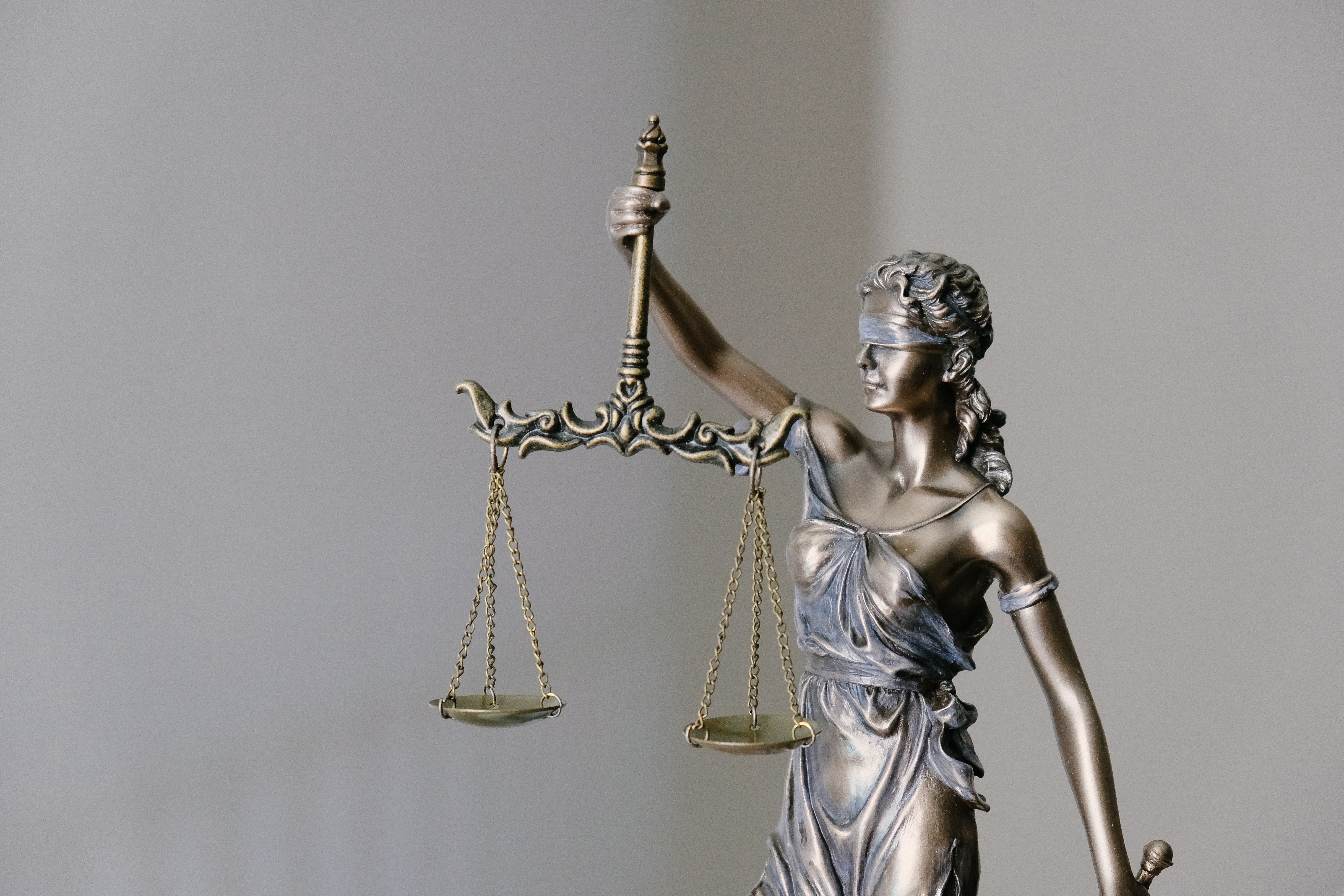INTRODUCTION (Children in Conflict with Law)
A kid in conflict with the law is any youngster under the age of 18 who is involved in the criminal justice system for offences committed by him or on suspicion of commission. It repealed the previous legislation (Juvenile Justice Act 2000), which dealt with two types of children:
- Children in need and protection of care.
- Child in conflict with law.
The new law aims to meet the criteria established by the United Nations Convention on the Rights of the Child, which India joined in 1992. It specifies procedural protections, terminology, and implications for terms such as "child," "child in dispute with the law," "juvenile," and so on. It also handles a number of key problems such as child adoption, the status of delinquent cases, and the jurisdiction of numerous authorities. The Central Adoption Resource Authority, which has been given the status of statutory authority under the act, is one of the key changes made by the new law.
The new legislation was enacted in the aftermath of the Nirbhaya Gang Rape Case in 2012, in which one of the prisoners (seventeen years and six months according to birth certificate, school records, and bone ossification) was a juvenile and sentenced to three years in a reform home. This sparked popular uproar throughout the country, and eight writ petitions were filed with the Supreme Court challenging the unconstitutionality of the statute's provisions but were dismissed by the court.
The bill was introduced in parliament by the Union Minister for Women and Child Development, Maneka Gandhi, and set out specific guidelines for a juvenile to be tried as an adult in cases of "heinous offences." After much deliberation and debate, it was passed by both houses on December 22nd, 2015, and went into effect on January 15th, 2016.
THE OBJECTIVE OF THE STATUE
Provision for children under the age of sixteen years for heinous crimes-
Section 15 of the aforementioned legislation establishes particular criteria for minor offenders aged 16 to 18 who have committed or are suspected of committing any serious crime. Following a preliminary evaluation, the board has the authority to refer cases to children's court (Court of Session) for severe offences. The Act also offers a "safe haven" for children during and after the trial until the age of 21, after which their behavior will be assessed. Following the examination, the offenders would be sentenced to prison for the remainder of their sentence or released on probation.
By not giving total immunity/exemption to minors under the age of 18, the clause attempts to establish deterrent among juvenile offenders for committing terrible crimes like as rape or murder and strives to give justice to the victims and their families.
New chapter on Adoption (which tries to streamline adoption process for abandoned, surrendered, and orphans)-
The Central Adoption Resource Authority (CARA) has been given the status of a legislative organisation in order to streamline the adoption procedure for abandoned, relinquished, and orphan children. A new independent chapter (VIII) has been introduced that contains extensive regulations on adoption and penalties for noncompliance. Procedures for in-country and inter-country adoption have been added; a divorced or single individual may adopt a kid, but a single male may not adopt a female child.
NEW OFFENCES LAY DOWN IN THE NEW LAW
Several new offences have been added which were earlier not included under any law, the new law addresses these issues, and these are:-
1. Sale and procurement of children for illegal adoption or any other purpose.
2. Offences against disabled children majorly kidnapping, abduction and selling.
3. Use of children by militant groups.
4. Offering narcotic substances to children.
5. Using children for begging and other related activities.
6. Using children for abetting or committing any crime.
7. Abusing, assaulting or abandoning, neglecting a child so as to cause him assault and abuse.
The punishment for these offences has been defined, such as any officer who fails to notify a child's kidnapping within 24 hours is responsible for a term of six months or a penalty of Rs.10,000, or non-registration of a child care facility results in a penalty of Rs. 1 lakh or a term of one year. Providing a narcotic drug to a kid is likewise a criminal offence, punishable by a seven-year prison sentence and a fine of Rs.1 lakh.
NEW GUIDELINES FOR CHILD CARE INSTITUTION WITH RESPECT TO THEIR REGISTRATIONS
The legislation establishes detailed rules for the required registration of child-care facilities, whether administered by the government (state) or by any non-governmental organisation, or even those that receive government grants and loans, under the statute within six months of the act's enactment. Non-compliance with this paragraph will result in severe penalties, as this rule aims to eradicate the negative consequences that formerly existed under the guise of child care facilities, such as begging, trafficking, and so on.
CHANGES IN THE PROVISIONS OF NEW ACT WITH RESPECT TO CHILDREN IN CONFLICT WITH LAW
The new legislation offers a safeguard for juveniles or children who are in dispute with the law and require care and protection. The term "Juvenile" in conflict with the law has been renamed "Child in conflict with the law." The offences are classified as petty/heinous/serious, and all juveniles who commit such offences, according to the new law, will be tried as adults after a preliminary assessment by the Juvenile Justice Board within three months of the kid's first appearance before the board, as specified in Sections 14 and 15.
As a result, any youngster between the ages of 16 and 18 will be tried as an adult in the Court of Sessions. During the trial, the child/juvenile would be taken to an observation house, and all offenders would be classified based on their age, gender, mental state, and, most importantly, the nature of their offence.
A Place of Safety will be built for minors above the age of 18 or children between the ages of 16 and 18 who have been charged or convicted of a serious crime. The Place of Safety will feature distinct arrangements and amenities for children who are on trial and those who have been convicted. The Juvenile Justice Board will perform frequent inspections of adult-only jails to see whether any children are being held there and will take prompt action to transfer such a kid to the Observation Home.
If the child is tried as an adult in a children's court, the final order must include a private care plan for the child's rehabilitation and social reintegration as outlined in Chapter VII of the statute, as well as regular follow-up by probation officers, the District Child Protection Unit, or a caseworker.
The court will ensure that the child is maintained within the Place of Safety until the age of 21, following which he will spend the remaining time as a regular adult or be freed if the court is satisfied that he has undergone reformative reforms. The Act prohibits the use of the death sentence or imprisonment without the possibility of release for juvenile offenders who are handled as adults by the juvenile justice administration.
Role of State of State Government for Protection of Juvenile in Conflict with law
The Act requires members of the Juvenile Justice Board and the Child Welfare Committee to attend acceptance training within two months of their appointment (Section 4 and 27).
A -Once every three months, the Chief Judicial Magistrate or Chief Metropolitan Magistrate is to audit the pendency of cases in the Juvenile Justice Board and instruct the Board to build the recurrence of sittings or prescribe the structure of an additional Board (Section 16).
B -An arrangement has been made for the formation of a High Level Committee to review the status of cases in the Juvenile Justice Board.
C -Under Section 36 of the JJ Act of 2015, Child Welfare Committees are required to provide quarterly reports to the District Magistrate on the status and nature of cases transferred. The District Magistrate is expected to conduct a quarterly audit of the Child Welfare Committees and to prescribe remedial steps to resolve the pending matter. If necessary, the District Magistrate may submit a report on his survey to the State Government, which may result in the formation of further boards of trustees. If the cases continue to be pending after three months, the State Government should disband the present Committee and form a new one.
State governments must also register all facilities within a half-year after the JJ Act's implementation, whether they are run by the government or by a non-governmental organisation, and whether they are intended to lodge children entirely or partially. The need for foundation registration is irrespective of whether or not the foundation receives government grants. The State Government is obligated to grant the organisation a temporary enrollment endorsement within one month of the date of usage. In addition, non-enrollment in a Child Care Institution carries a one-year detention or a fine of at least Rs. 1 lakh (Section 42).
JUVENILE JUSTICE ( CARE AND PROTECTION OF CHILDREN ) ACT, 2015 A MAJOR STEP BACK
Indeed, the new demonstration has overlooked advancements in disciplines such as criminology, penology, victimology, neuroscience, and remedial equity that have gained ground in managing people conferring offences and casualties of offences in the dynamic and forward-thinking theory of adolescent equity.
While remedial practise is being refined in numerous nations despite for genuine offences, resulting in a decrease in rehash offences by them, the Indian parliament went under the political and enthusiastic weight made by one terrible instance of primitive group assault in which the blamed happened to be a youngster nearly accomplishing greater part.
CONCLUSION
The tension between the defensive strategy of the Juvenile Justice (Care and Protection of Children) Act and the customary manner of dealing with crime distinguishes the legal procedure identifying with adolescent equality framework. While the higher courts have generally advanced the care and insurance rationale of the adolescent equity framework, the requirements providing ascension to them and the option thereunder exhibit ignorance at all levels of the legal method The need of raising awareness among lower-level legal professionals regarding the procedural differences between adult and blaming child cases cannot be overstated.
On April 6, 2015, the Supreme Court requested the legislature to make fundamental modifications in adolescent legislation with the objective of having a significant impact and making an impression on the overall public that the life of the victim was equally important under the rule of law. It was "very difficult" to admit that a teenage reprobate would be unaware of the consequences while committing crimes such as assault, murder, and dacoity. The court stated that the increased involvement of kids in such heinous wrongdoings necessitated a fundamental need to reconsider revisions to the Juvenile Justice (Care and Protection of Children) Act, 2000.

 Create and manage your profile
Create and manage your profile Refer an author and get bonus Learn more
Refer an author and get bonus Learn more Publish any lost and found belongings
Publish any lost and found belongings Connect with the authors & add your review comments
Connect with the authors & add your review comments Join us for Free to advertise for your business or
Contact-us for more details
Join us for Free to advertise for your business or
Contact-us for more details
 Join us for Free to publish your own blogs, articles or tutorials and get your
Benefits
Join us for Free to publish your own blogs, articles or tutorials and get your
Benefits


 1 like
1 like


